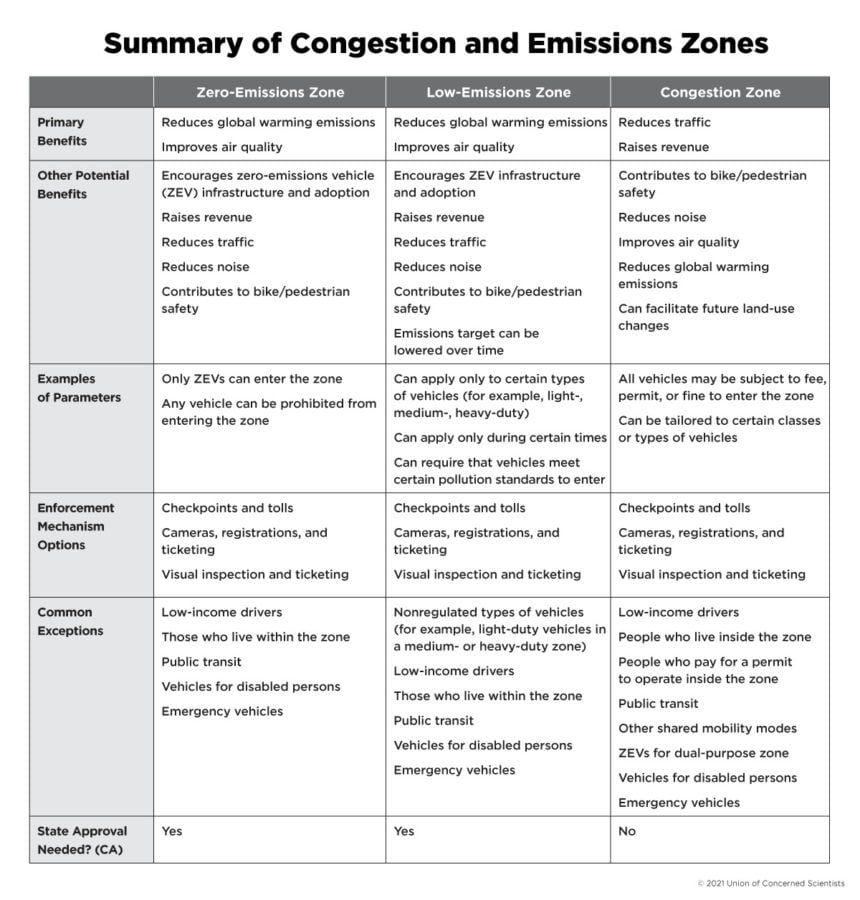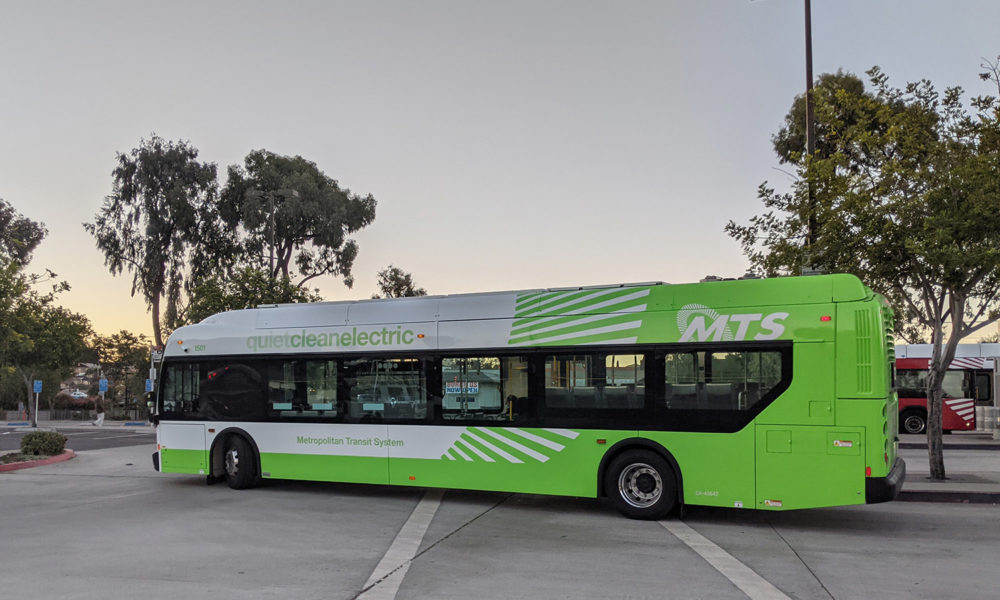EDITORS NOTE: This blog was co-written with Leslie Aguayo, a Climate Equity Program Manager from The Greenlining Institute
Zero emission vehicle technologies, like battery electric and fuel cell vehicles, are critical to reducing air pollution and climate-changing emissions from transportation. State and federal policies that require and incentivize zero emission vehicles sales are important tools to ensure that this transition away from fossil fuel combustion happens as rapidly as possible. The reduction in tailpipe pollution will help address harmful and inequitable air pollution exposure from on-road vehicles. And, there are tools that could be used to target these benefits to specific communities–communities that are disproportionately burdened by air pollution. One promising tool is the use of low or zero emission zones to prioritize the use of cleaner vehicles.

Low- and zero-emissions zones are a policy tool available to cities to improve air quality and can reduce congestion, raise revenue, and achieve climate goals. There are more than 250 of these zones across Europe, but can they work in the United States? To help answer this question, the Union of Concerned Scientists and the Greenlining Institute have created a primer to explore potential benefits to communities, as well as factors to consider in using zones as a tool to increase racial and economic equity. The goal of this primer is not to be prescriptive, but instead as an aid to help policymakers and stakeholders understand and evaluate the utility of low- and zero-emissions zones for their communities, as well as provide important considerations towards equitable policymaking.
Congestion, low-emission, and zero emission zones compared
A congestion zone is designed primarily to reduce vehicle travel and is often used to combat traffic and other issues caused by having many vehicles on the road. Low-emissions zones (LEZ) and zero-emissions zones (ZEZ) are designed primarily to reduce emissions, and are often used to combat air pollution and meet global warming pollution reduction goals.
Congestion zones and LEZs or ZEZs are similar to each other, but there are key differences. In California, a city has the ability to implement a congestion zone on its own, but legislation may be needed before a city can begin creating LEZs or ZEZs.
A congestion zone may limit vehicle entry by type or time of day. Often, a fee will be used to incentivize drivers to choose an alternative form of transportation within the zone or to avoid it altogether. LEZs and ZEZs usually require vehicles to meet a certain pollution standard, but they can also be designed to apply only to certain classes of vehicles, such as heavy-duty trucks.

Consideration of local needs vital to implementation
Communities in other countries have established ZEZs to discourage the use of polluting gasoline and diesel vehicles in dense urban areas. Given the high levels of vehicular air pollution in California and the racial inequities in exposure to tailpipe pollution, communities may want to explore ZEZs as a potential remedy ZEZs are promising because, in addition to promoting long-term change, such as the transition to electric vehicles, if designed equitably, they can direct the benefits of existing clean vehicle policies to people who are overburdened by harmful air pollution.
In implementing ZEZs in hardest hit communities, there are important equity considerations that must be addressed, such as access to cleaner vehicles and chargers, ensuring market-based approaches result in real-world emissions reductions, and, most importantly, assurance that the community has the power to determine the structure and implementation of the zone.
Similarly, decisionmakers must consider many factors in pursuing an LEZ/ZEZ, and each city will need to explore the options that work locally. For too long, in implementing solutions to help the environment, decisionmakers have missed the opportunity to center economic and racial justice. ZEZs hold potential to further all three, but the policy should be considered carefully within each local context.
In fact, equitable implementation of an LEZ or ZEZ is not possible if it is done in an acontextual or ahistorical manner, particularly in California where car dependency, highways, and transit systems were born out of racialized policies. New policies must not ignore the impact of past decisions such as the construction of highways intentionally designed to segregate communities of color or punitive, racially-targeted transit enforcement. On a smaller scale, each locality’s unique context must also be factored to design an appropriate ZEZ that targets community needs, seizes opportunities for economic development and prioritizes racial equity.
For these reasons, this primer highlights the critical importance of context, and prioritized interviews and qualitative data from stakeholders in California’s communities with the highest levels of air pollution and poverty levels (AB 617 Communities). The feedback received was critical for understanding community perspectives on ZEZs, developing equity considerations, policy recommendations for decision makers, and mitigating future transportation induced environmental inequality.
While LEZs and ZEZs are not the silver bullet to equitable transportation or pollution reduction, if done with an equity-centered approach, and in combination with other community-driven strategies, the potential benefits could serve as a step in the right direction.

